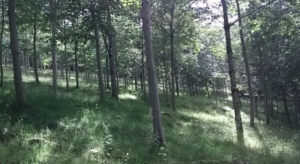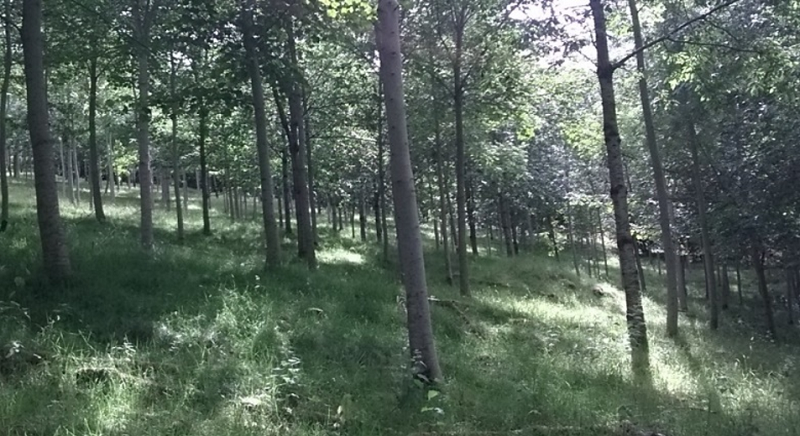Agroforestry – Farming with trees (FWN 33)
15 October 2019Agroforestry – integrating trees into agricultural practices – can boost farm productivity, provide livestock welfare benefits, improve soil health, help manage water flows, enhance wildlife and contribute to mitigating climate change.
Woodland pasture and grazing, hedges, hedgerow trees, shelterbelts, and wooded riparian buffers are all forms of agroforestry and are commonplace in the Scottish landscape. However, there are real opportunities for further integration of trees to the benefit of farm businesses.
Historically, woodland grazing was commonplace in Scotland, although far fewer of these woodlands still exist today. Livestock benefit from shelter but a silvo-pastoral system can also extend the grazing season. The sheltered environment under the tree canopy allows spring grass to flush earlier. The trees also improve the soil structure and keep the soil drier, so grazing can continue for longer towards the end of the year. Such a woodland grazing system can reduce winter housing costs and improve livestock health.
Agroforestry also has enormous potential with chickens. The free-range hens that have tree cover are less stressed and are therefore more productive than those without trees. Incorporating woodlands for poultry also opens the door to sell premium-priced products. Well-designed woodland planting around chicken sheds not only screens the building but can also help to mitigate ammonia emissions. A tool to help design such woodlands was mentioned in Issue 32. For more details of this system visit farmtreestoair.ceh.ac.uk.
Hedgerows made up of the right tree and shrub species can add value rather than being purely a net cost to maintain.
“Edible species can supplement livestock nutrition by providing fodder or tree hay.”
Fruit or nut-bearing hedges can present a diversification opportunity by adding a potential income stream without making large scale changes to land use.
Growing trees in rows between strips of arable crops can increase total production from that field. Because trees root deeper, they utilise water and nutrients otherwise unused by standard crops. The additional production of fruit trees, for example, can more than makeup for the arable production from the ground given over to trees.
The Forestry Grant Scheme (FGS) offers an agroforestry grant for either a silvo-arable or silvo-pasture system. There is an initial capital payment for establishing individually protected trees at a density of either 200 or 400 trees per hectare, plus annual maintenance payments.
Some farmers have found other approaches to achieve the benefits in their particular circumstances. If the land can be taken out of grazing initially, trees can be
planted under a traditional forestry model at 2m spacing, then gradually thinned to achieve a spacing of 7-8m. Thinning can start when the woodland is about 12 years old, with removed trees providing a potential source of fuelwood. Once the tree canopy starts to be opened up a grass sword quickly develops and livestock can be allowed into the woodland once the trees are fully established. The trees left standing as the final crop should be pruned to improve their form and raise the canopy.
Stephen Adlard, SRUC for the Farm Advisory Service
Contact the Farm Advisory Service (FAS) National Advice Hub on 0300 323 0161 or advice@fas.scot for help and advice on how you could introduce agroforestry to benefit your business.
This article is taken from the Farm Woodland News Autumn 2019 edition.
Sign up to the FAS newsletter
Receive updates on news, events and publications from Scotland’s Farm Advisory Service


